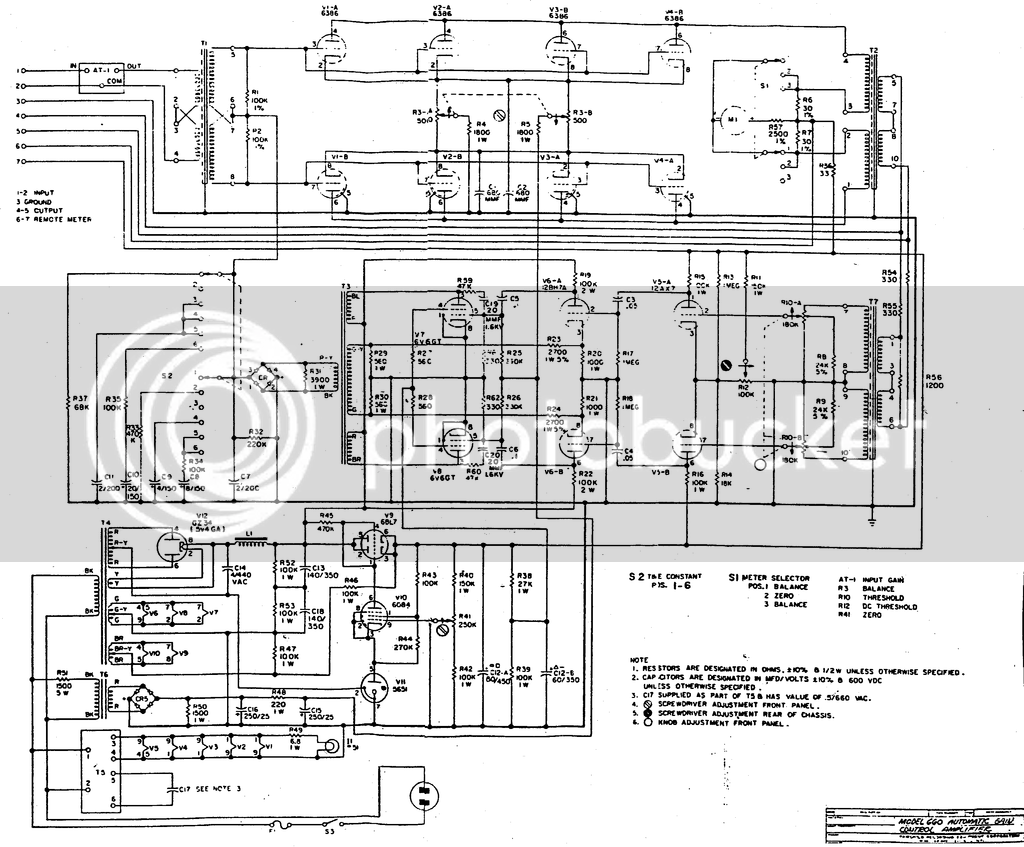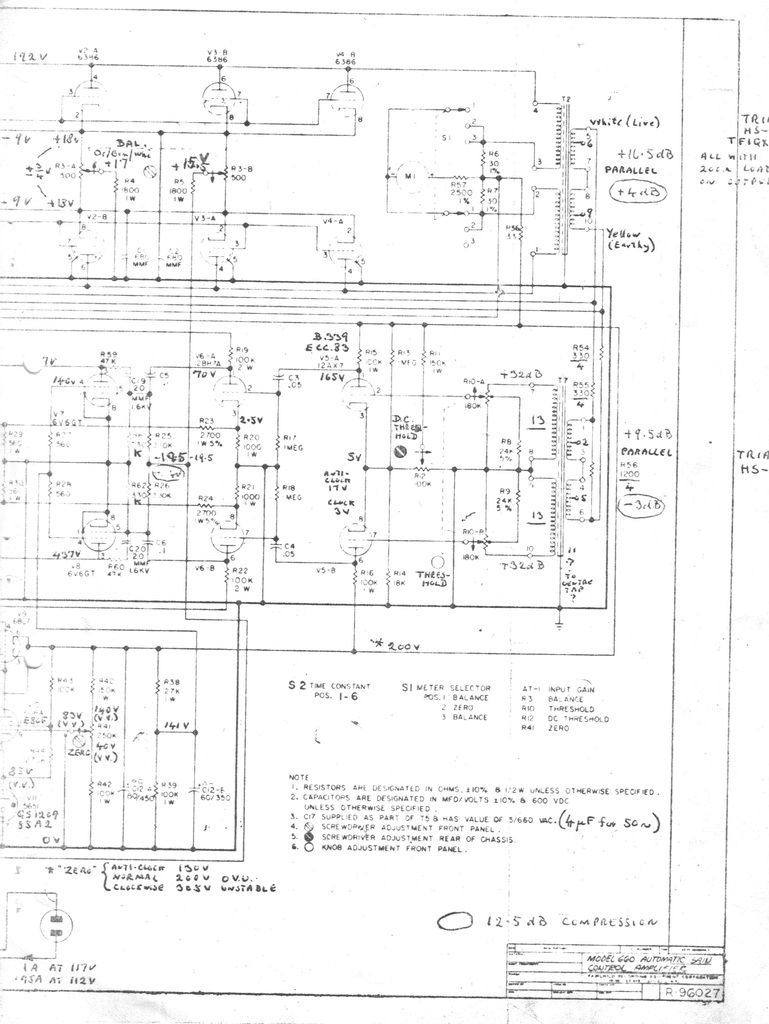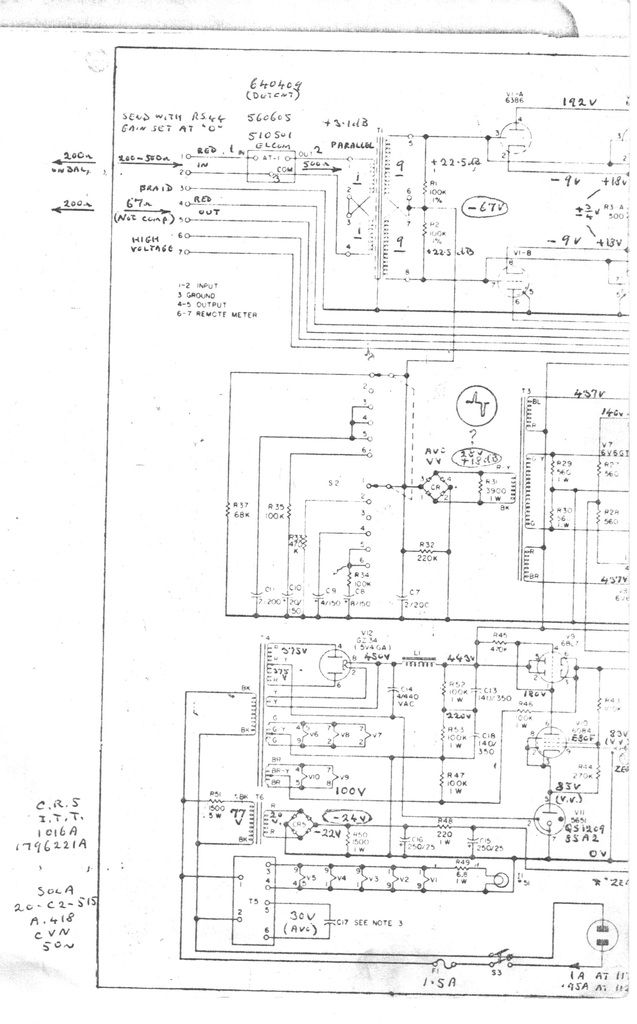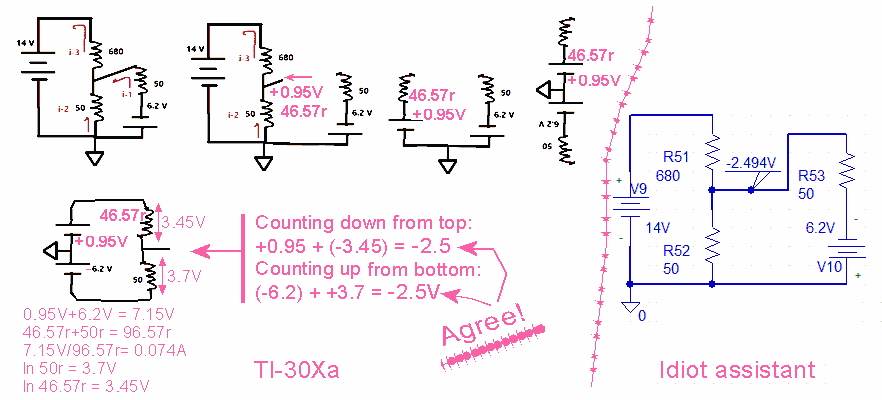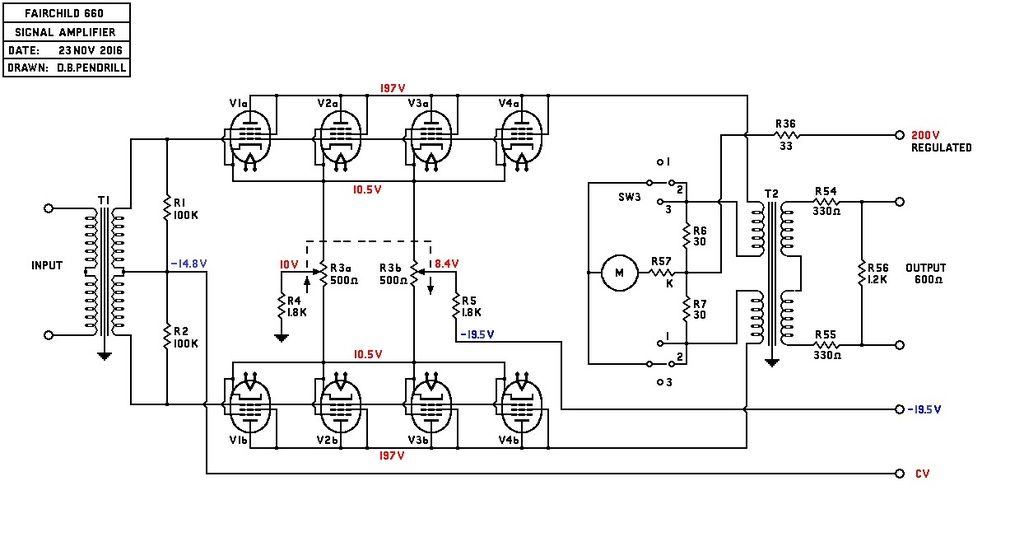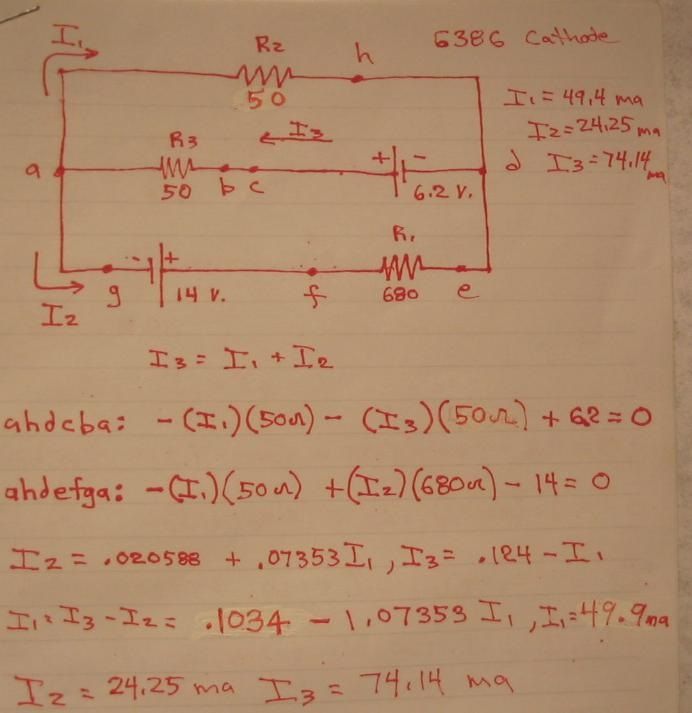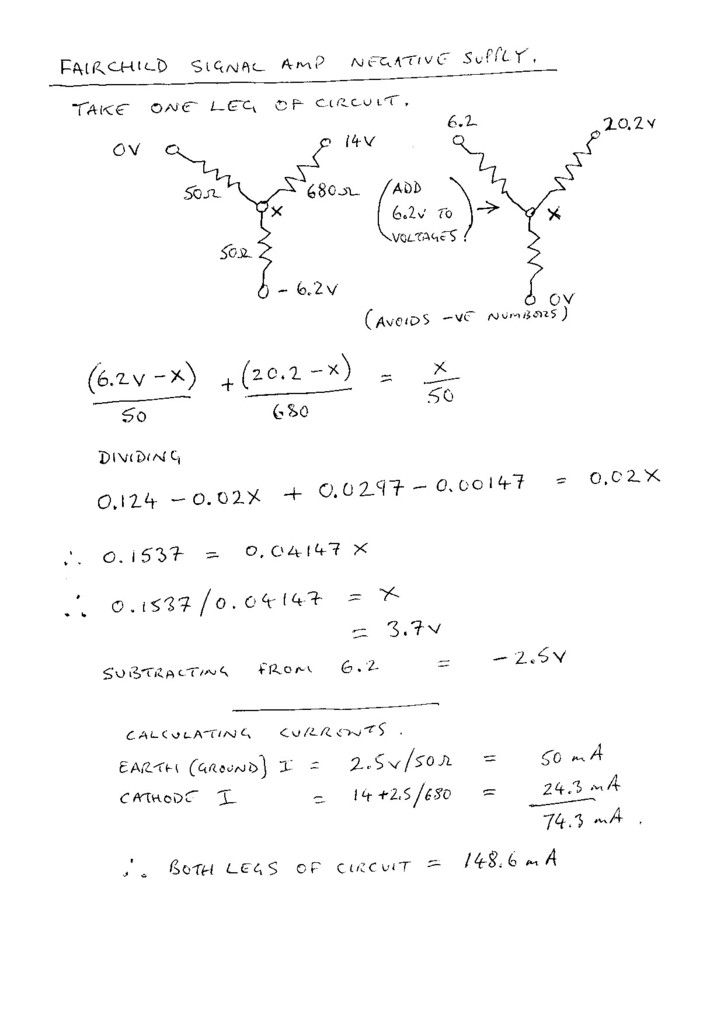I am about to start making a Fairchild 660 for a studio.
There are a couple of issues that I'd like to clarify first.
The first is the way the bias is applied to the control amp output valves on the original 660
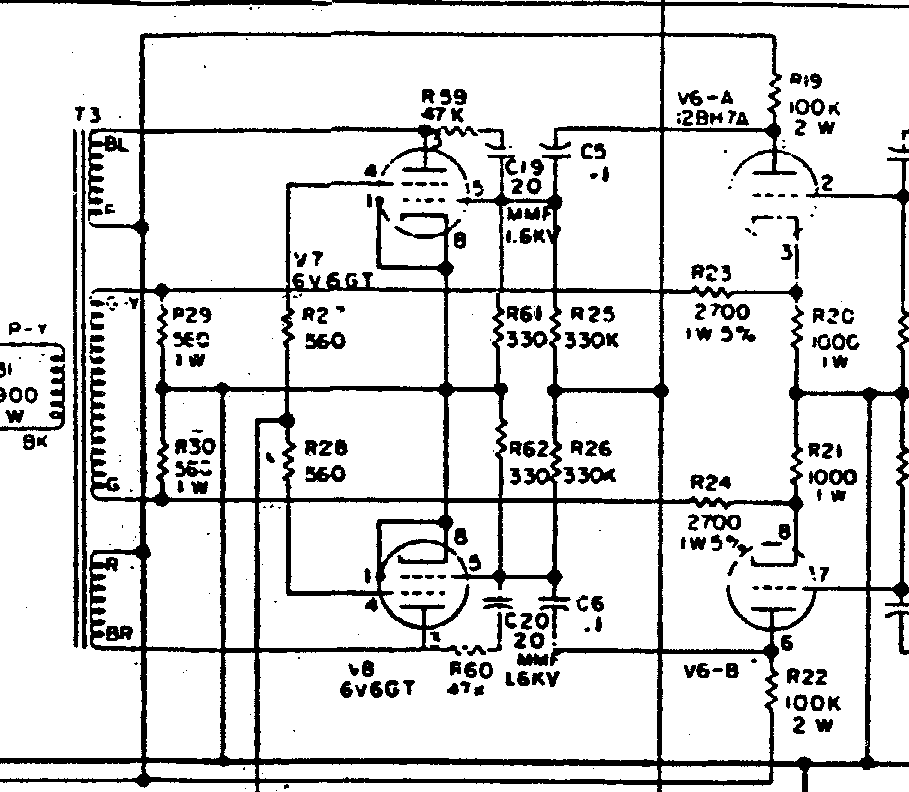
It has two sets of grid resistors, the other must be 330k not 300 ohms????, the resistor numbers are out of sequence so it looks like they were added later to cure some instability, they feedback anything over 170KHz, any thoughts?
By the time they came to design the 670, they kept the feedback caps and 47k's but went for a simpler standard bias feed through 150k's instead of 330k's

The original 6V6's only have a 100k limit for fixed bias operation, whereas the 6973's limit is 500k
My inclination is to go with the 670 modification.
The second question concerns the B+ voltage to the GR tubes, its 240V for the 670, but only 200V for the 660. There are also slight differences to the bias arrangements to the cathode balance..
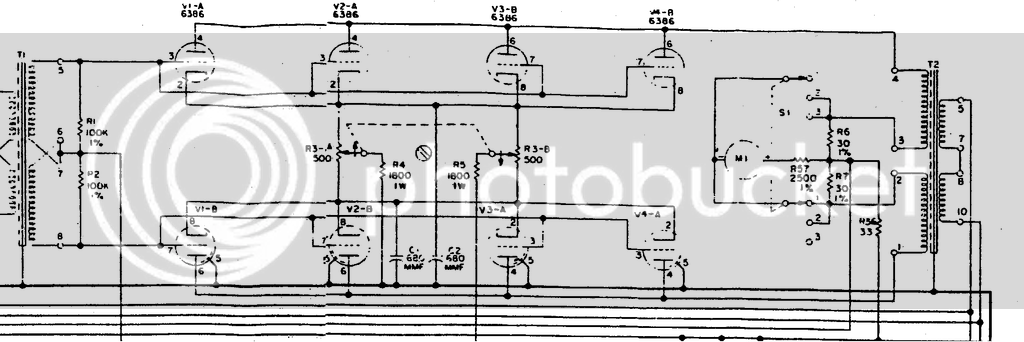
With the 660, the CR goes into the CT of the IPT but the -19V 6V6 bias goes into the cathode balance pots.
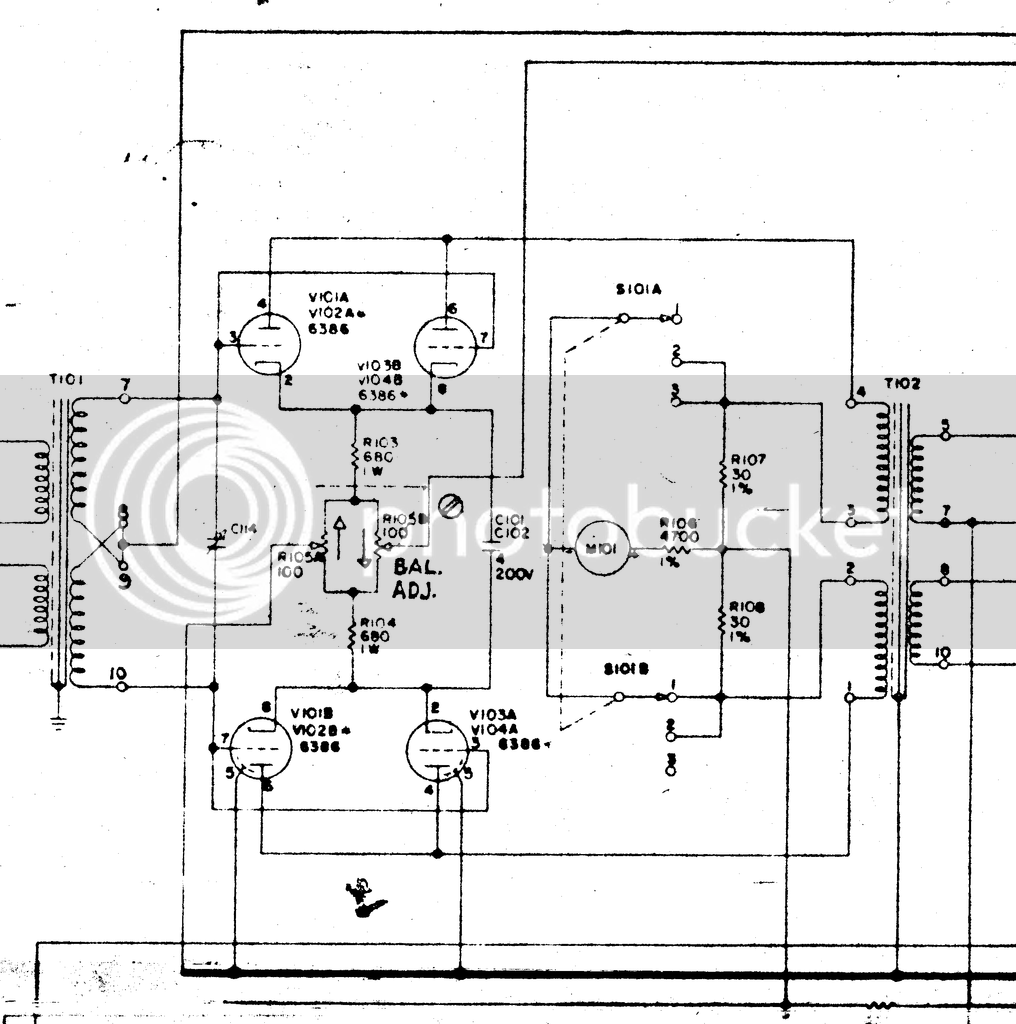
With the 670 the bias of only -6.2V goes into the balance pots, and the 2x 100k grid resistors are deleted.
I'd be interested if anyone can unpick the logic of these changes
Best
DaveP
There are a couple of issues that I'd like to clarify first.
The first is the way the bias is applied to the control amp output valves on the original 660

It has two sets of grid resistors, the other must be 330k not 300 ohms????, the resistor numbers are out of sequence so it looks like they were added later to cure some instability, they feedback anything over 170KHz, any thoughts?
By the time they came to design the 670, they kept the feedback caps and 47k's but went for a simpler standard bias feed through 150k's instead of 330k's

The original 6V6's only have a 100k limit for fixed bias operation, whereas the 6973's limit is 500k
My inclination is to go with the 670 modification.
The second question concerns the B+ voltage to the GR tubes, its 240V for the 670, but only 200V for the 660. There are also slight differences to the bias arrangements to the cathode balance..

With the 660, the CR goes into the CT of the IPT but the -19V 6V6 bias goes into the cathode balance pots.

With the 670 the bias of only -6.2V goes into the balance pots, and the 2x 100k grid resistors are deleted.
I'd be interested if anyone can unpick the logic of these changes
Best
DaveP



